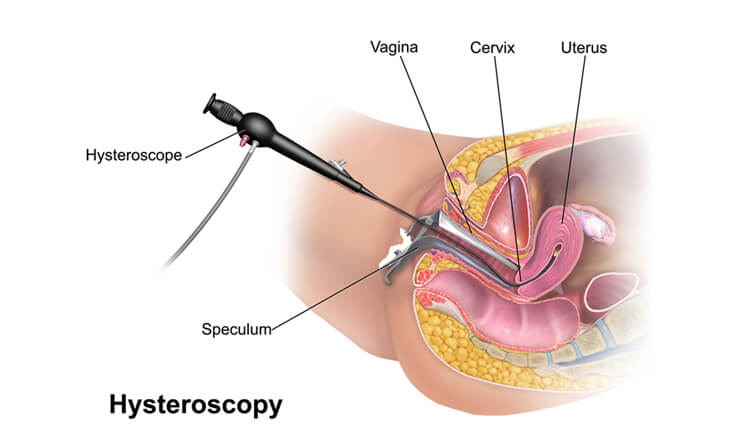How to Test If A Woman Is Infertile?
The journey to parenthood can be filled with joy, anticipation, and, sometimes, unexpected challenges. When pregnancy doesn’t happen as quickly as expected, questions arise, and the topic of infertility may come up. If you have been trying to get pregnant for over a year, with no known coital difficulties and no contraception use, it’s time to consider investigating potential fertility issues.
But remember that infertility in women is a complex issue, and there’s no single “test” that definitively confirms or denies it. So, in this blog, we will explore the different causes of infertility in women and how to detect them.
When to Consider Fertility Testing?
If you are under 35 years old and haven’t been able to conceive after 1 year of regular, unprotected intercourse, it’s a good time to talk to your doctor about initial fertility testing.
If you are 35 years or older, it’s recommended to see a doctor about fertility testing after 6 months of trying to conceive without success.
If you have irregular periods, painful menstruation, painful intercourse, you are likely to have problems getting pregnant.
Also, if you are diagnosed with endometriosis, PCOS, or fibroids, it is high time to consult a fertility doctor for infertility tests because early detection can help to determine the causes and timely treatment.

Causes of Infertility in Women
Why do some women struggle to conceive? Let’s find out the reasons behind it.
The main culprits behind infertility in women are divided into three categories: ovulatory causes, tubal causes and uterine causes.
Ovulatory Causes: When the ovaries fail to release healthy eggs regularly, it creates significant obstacles to conception. This is because healthy egg release is crucial for the fertilization process. Now, you might be wondering what causes issues with ovulation.
- Eating disorders: severe eating disorders like anorexia nervosa and bulimia often lead to severe malnutrition and hormonal imbalances, causing the ovaries to stop producing eggs, ultimately resulting in infertility in women. Bulimia can also cause irregular or absent periods and reduced fertility.
- Weight Fluctuation: Rapid or excessive weight loss, often seen in individuals with eating disorders or following restrictive diets, can deplete the body of essential nutrients needed for hormone production and ovulation. Excess body fat can also disrupt hormone balance, leading to irregular ovulation and difficulty getting pregnant. This is like putting the brakes on the entire reproductive system.
- Polycystic Ovary Syndrome (PCOS): This common condition disrupts the normal function of the ovaries, leading to the formation of multiple small cysts and an imbalance of reproductive hormones. PCOS disrupts the normal maturation and release of eggs, making ovulation irregular or infrequent. If you are diagnosed with PCOS, you should go for infertility tests.
- Hypothalamic Dysfunction: The hypothalamus, a part of the brain, plays a crucial role in regulating hormones. When it malfunctions due to stress, tumours, or other medical conditions, ovulation can become irregular, resulting in the development of infertile eggs.
- Excess Prolactin Production: Prolactin, a hormone primarily associated with milk production, can also suppress ovulation when present at elevated levels.
Tubal Causes: Fallopian tubes act as a pathway for sperm to reach the egg and for the fertilized egg to travel back to the uterus for implantation. When damaged or blocked, these vital functions are hampered, making it difficult to conceive naturally causing infertility in women. But what hurts these essential passageways?
- Pelvic Inflammatory Disease (PID): This is the most common culprit behind the fallopian tube blockage. It is often caused by untreated sexually transmitted infections (STIs) like chlamydia or gonorrhea. Bacteria enter from the vagina and cervix, inflaming the fallopian tubes and forming scar tissue that can block them.
- Tuberculosis: While less common, tuberculosis can also affect the fallopian tubes. When the TB bacteria spread to the reproductive organs, they can cause inflammation and scarring, leading to blockages in fallopian tubes.
- Hydrosalpinx: This condition arises when fluid accumulates and swells a blocked fallopian tube. It often results from chronic PID or endometriosis and can further hinder egg and sperm movement.

Uterine Causes: Uterine and cervical factors can play a significant role in infertility in women by hindering the process of egg implantation and sperm transport. There are several factors involved in the uterine causes, including:
- Fibroids or Myomas: These are benign growths within the muscular wall of the uterus. While many women with fibroids have no fertility issues, their location and size can impact conception and pregnancy. Large fibroids can block the fallopian tubes, distort the uterine cavity, or impede implantation.
- Polyps: These are benign growths that arise in the inner uterine lining. They are usually noncancerous, but if left untreated, they might cause difficulties with periods or can be a significant cause of infertility in women.
- Congenital Septae: These are uterine malformations present from birth, where a septum (muscular wall) divides the uterus partially or completely. This can reduce the available space for implantation or increase the risk of miscarriage due to abnormal uterine shape.
- Cervical Stenosis: This is a narrowing of the cervical opening due to inherited malformation or damage to the cervix, which can make it difficult for sperm to enter the uterus. It can be caused by scarring from previous procedures, infections, or endometriosis.
Other Causes: There are some other factors, like thyroid problems, environmental toxins, age, and even your partner’s sperm health, that can also interfere with your ability to conceive a baby, resulting in infertility in women.
Diagnosis of Female Infertility
Infertility can be a challenging and emotionally difficult experience for couples, but a proper diagnosis can help in identifying the underlying cause and determining the best course of treatment.
Here are a few infertility tests that your fertility doctor may recommend to find out why you are not able to conceive.
Initial Evaluation: The diagnostic journey typically begins with a comprehensive medical history and physical examination. Your fertility doctor will inquire about your menstrual cycle, sexual history, and any potential risk factors like chronic health conditions. A pelvic exam will also be recommended to assess the uterus, cervix, and ovaries for any abnormalities. This complete evaluation can help your doctor navigate for further diagnosis and treatment planning.
Ovulation Testing: Ovulation testing is a crucial step in diagnosing female infertility that gives valuable insights into your cycle and egg health. This infertility test helps determine whether you are releasing eggs regularly, creating the fertile window for conception. So, the different methods for ovulation testing may include:
- Baseline Scan: This initial ultrasound scan, performed early in your menstrual cycle (typically days 3-5), acts as a snapshot of your ovarian landscape. It allows your fertility specialist to assess the number and size of follicles and detect other issues like cysts, fibroids, or abnormalities that might hinder egg development.
- Follicle Monitoring: Follicle monitoring is a series of transvaginal ultrasounds that help to track the growth and development of the dominant follicle throughout your cycle.
- AMH (Anti-Müllerian Hormone) Test: This blood test measures AMH, a hormone produced by developing follicles. AMH levels indirectly reflect your remaining egg reserve, indicating your fertility potential. A lower AMH level may suggest a declining egg reserve, which could be a significant cause of infertility in women.
- Day 2 FSH Test: This blood test measures follicle-stimulating hormone (FSH) levels. FSH plays a key role in follicle development. High FSH levels could suggest diminished ovarian reserve or issues with egg quality, while low levels might indicate problems with ovulation.

Tubal Testing: We have already mentioned that a blockage in the fallopian tubes can lead to infertility in women. But a popper diagnosis can help to find the reason behind the blockage and fix it. So, here are a few methods to look into it:
- Hysterosalpingography (HSG): In this procedure, a contrast dye is injected into the uterus and fallopian tubes. Then, an X-ray camera takes snapshots to see how the dye flows through your fallopian tubes. If tubes are open, the dye spills into the pelvic cavity and is visible on X-rays. If the dye gets stuck anywhere, it could be a sign of a blockage in your tubes, which can make getting pregnant tricky.
- Sonosalpingography (SSG): It is a non-invasive ultrasound examination, that can be performed at IVF Centre in Delhi in which a saline solution is injected into the uterus and fallopian tubes. Similar to HSG, the ultrasound waves monitor the flow of the solution through the tubes. Any blockage in the fallopian tube will prevent the fluid from flowing.
- Laparoscopy: Laparoscopy is a minimally invasive surgical procedure where a camera is inserted through a small incision in the abdomen to visualize the fallopian tubes and other pelvic organs directly. It is the most accurate way to diagnose tubal blockages and other pelvic abnormalities like endometriosis or adhesions.
Do you know laparoscopy not only helps to find the tubal blockage but also helps to fix it? Interesting. Right?
Pelvic Causes Testing: Uterine conditions might hinder your fertility. Thankfully, a wide range of pelvic causes infertility test options are available to illuminate what’s happening inside. These may include:
- Ultrasound: Imagine a window into your uterus! That’s what an ultrasound provides. This imaging technique uses sound waves to create detailed pictures of your uterine structure, allowing your doctor at the IVF Centre in Delhi to assess fibroids, polyps, endometriosis, congenital abnormalities, myomas and uterine lining.
- 3D Ultrasound and MRI: In more complex cases where regular ultrasound might not provide enough detail, advanced imaging techniques like 3D ultrasound and MRI can be used. 3D ultrasound creates a three-dimensional image of the uterus, offering a more comprehensive view of its shape and any potential abnormalities. Meanwhile, MRI uses strong magnetic fields and radio waves to create detailed images of the uterus and surrounding tissues, including soft tissues like scar tissue and endometriosis.
- Hysteroscopy: This minimally invasive infertility test involves inserting a thin, flexible tube with a camera through the cervix and into the uterine cavity. It allows for direct visualization of the uterine lining. It’s like having a live video feed of your uterus, allowing your doctor to diagnose uterine adhesions and treat thin uterine lining.
Understanding the causes and tests surrounding infertility in women equips couples with a powerful tool – the ability to make informed decisions about their reproductive health. If you notice any potential signs of infertility, don’t hesitate to seek guidance from an experienced fertility specialist like Dr. Rhythm Gupta. Early diagnosis and intervention can significantly boost your chances of conception, turning hopes into reality.







